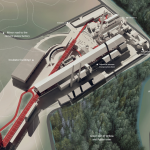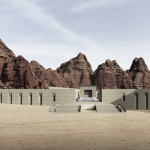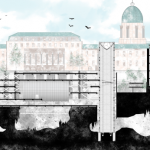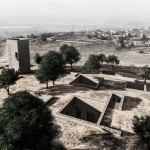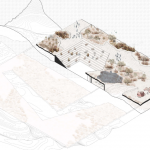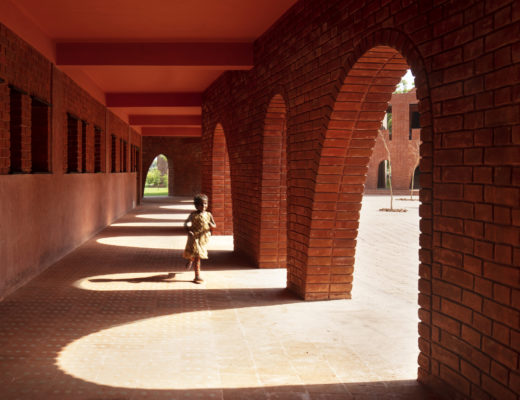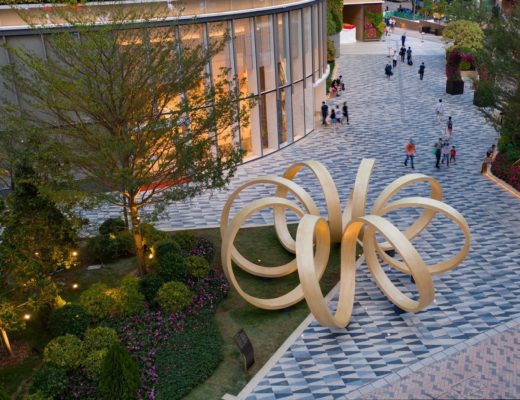UK-based Tamayouz Excellence Award with Iraqi origins has announced the winners of its International Graduation Projects Award – the world’s largest international award for architecture graduation projects. Each year, the award invites students of architecture, urban design, planning and landscape design to submit their graduation projects.

The first place winner is Lesia Topolnyk from Amsterdam Academy of Architecture, supervised by Floris Alkemade, Rob Hootsmans and Peter Veenstra. The second place winner is Jacopo Donato from Polytechnic of Turin, supervised by Marco Trisciuoglio, and the third place winner is Bryant Lau Liang Cheng from the National University of Singapore, supervised by Dr Cho Im Sik. The award also recognises seven honourable mentions and the architecture school of the year.
The International Graduation Projects Award is part of Tamayouz Excellence Award’s seven-category awards programme that champions and celebrates architecture from the Near East, North Africa and further afield. The award aims to recognise excellence in architectural design and education worldwide, and showcase excellent architectural examples to promote and provoke architectural debate.
The three winners and seven honourable mentions were selected out of 908 submissions, representing 151 universities from 64 countries. Selection for the top 10 submissions was made based on the award’s assessment criteria, highlighting projects that are aspirational and transformative, and that tackle local and global challenges through holistic understandings of context.
The winners and honourable mentions were selected by Tamayouz’s jury panel, which met in October 2019 at Coventry University in the UK. The judges this year were:
Professor Kanan Makyia, The Sylvia K. Hassenfeld professor at Brandeis University, Massachusetts, US; Ayad Al Tuhafi, owner and director of Ayad Al Tuhafi Architects; London, UK; Sebastian Hicks, Course director of architecture at Coventry University; Coventry, UK; Jerome Goyard, senior architect at Fevre Gaucher Architects + Urbanists; Paris, France; Ben Maltby, Global shelter and infrastructure lead at Save the Children USA; London, UK; Ben Flippance, Design director for IDP Group; Coventry,UK
Felipe Samaran Salo, Dean of the Architecture School at the Universidad Francisco de Vitoria; Madrid, Spain; Prisca Arosio, Urbanist and researcher; Amsterdam, The Netherlands; Stefanos Adamakis, Partner at Adamakis Architects & Associates; Volos, Greece.
In Lesia Topolnyk’s project, ‘Un-United Nations Headquarters’, the architect examined new opportunities emerging within the interlocking realms of politics and architecture. She explores the role of architecture in absorbing conflict and fostering its fruitfulness within a divided society. The project transforms the Sevastopol naval base into a trade port, positioning Crimea as a gateway to Ukraine and Russia.
Jury commented that the project was provocative and debates the role of architecture in conflict zones.

Jacopo Donato and Caterina Giacomello from Polytechnic of Turin and University of Turin, supervised by Marco Trisciuoglio and Fabio Armao presented their proposal ‘Building Peace in Mosul’, in which the architects aim to create a project that acts as a driving force for sustainable peace through the act of inserting the population directly into the city. The project replaces camps with temporary, self-sufficient cells that can be inhabited. The intention of the project is to not only offer an initial emergency solution that alleviates the wounds of the displaced inhabitants of Mosul and provides a comfortable space to await the reconstruction of the city, but also stimulate the process of realisation and empowerment.
Tackling the difficult problem of repopulating a war-torn city or country is not an easy task and unfortunately, it is always relevant. This proposal’s long-term plan seems to grasp a lot of the fine intricacies of the problem and develops a rhetoric for a proper response reaching far into the future.
The jury praised the entry saying that the concept showcases an appreciation of the long-term negative impact of tent camps. Reintegrating people back into the fabric of the city is a positive way towards reconstruction.
The modular construction proposal seems feasible, and by making a system that is easy to assemble, the project could be initiating a pilot project for cities all over the world that currently require reconstruction.
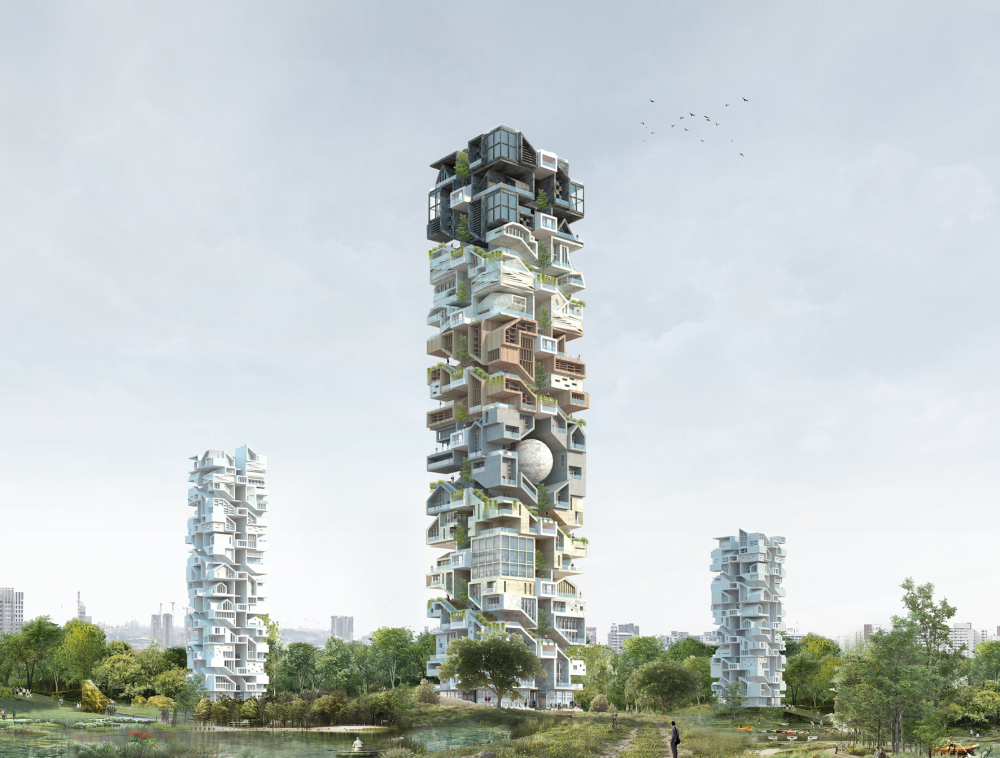
Third place winner is Bryant Lau Liang Cheng from the National University of Singapore, supervised by Dr Cho Im Sik. In his ‘Mixed-Used Prototypical Housing Skyscraper’ entry, he attempts to redefine the notion of vertical living and proposes the use of the skyscraper as a social apparatus. Lau sets forth an architecture that allows all residents to partake in not just the design of their own units, but also the programmes within the building.
Jury commented that the proposal grapples with a very complex socioeconomic and four-dimensional challenge, which is commendable. “The idea of a flexible building that can adapt to its community’s needs is valuable, and on the whole, the project is convincing. It is well visualised and properly documented, as it tackles the problem of an overpopulated metropolis with an elegant solution.
“We found the expression of the building modules playful and considerate of occupation. The multilevel exterior space, which enables the building to deliver quite human-scale elements whilst acting within a monumental scaled object, is interesting.”
The first prize winner will receive an MSc Scholarship for two years at the University Polytechnic of Milan, among other prizes.
Here are the proposals by the recipients of seven honourable mentions:

